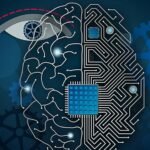AI in Language Translation: Advancements in AI-driven language translation services.
Language has always been a powerful medium for communication and understanding, but it can also create barriers when we encounter different tongues and dialects. Thanks to advancements in Artificial Intelligence (AI), language translation services have experienced a profound transformation. AI-driven language translation has made it possible to bridge the gap between cultures and connect people from diverse linguistic backgrounds. In this blog, we explore the remarkable strides made in AI language translation and how it is reshaping global communication.
- The Evolution of Machine Translation
Machine translation, the use of computers to translate text from one language to another, has been around for decades. However, AI has revolutionized this technology, making it more accurate and contextually aware. Neural Machine Translation (NMT), a subset of AI, uses deep learning algorithms to understand the nuances of language and generate more human-like translations. This advancement has significantly improved the quality and fluency of translated content.
- Real-time Translation
AI-driven language translation has expanded beyond traditional text-based translations. In today’s fast-paced world, real-time translation capabilities have become essential. AI-powered language translation apps and devices can instantly interpret spoken words and display translations in real-time, breaking down language barriers during face-to-face conversations and global events.
- Multilingual Content Creation
AI has enabled content creators and businesses to reach a global audience more easily. With AI language translation tools, websites, blogs, and marketing materials can be quickly translated into multiple languages, tailoring content to diverse markets and expanding international reach. This not only fosters cross-cultural understanding but also drives business growth and success in a globalized world.
- Customization and Context Sensitivity
AI has the ability to learn from user feedback and context, resulting in more accurate and contextually sensitive translations. AI-driven translation services can adapt to specific industries, terminologies, and user preferences, ensuring that translations are aligned with each user’s unique needs and context.
- Enhanced Communication and Collaboration
AI language translation tools are fostering global communication and collaboration. International teams can seamlessly communicate and work together, overcoming language barriers with AI-driven translation services integrated into various communication platforms and project management tools.
- Preserving Linguistic Heritage
AI-driven language translation is not just about connecting major languages; it also contributes to the preservation of lesser-known languages and dialects. With the help of AI, translations of rare and endangered languages can be preserved and shared, promoting cultural diversity and ensuring the continuation of linguistic heritage.
- Improving Language Learning
AI language translation is also revolutionizing language learning. Learners can benefit from instant translations while reading or listening to foreign language materials, helping them grasp new concepts and meanings more effectively. AI-powered language learning apps can provide personalized feedback and tailored language exercises, making language acquisition more engaging and efficient.


































